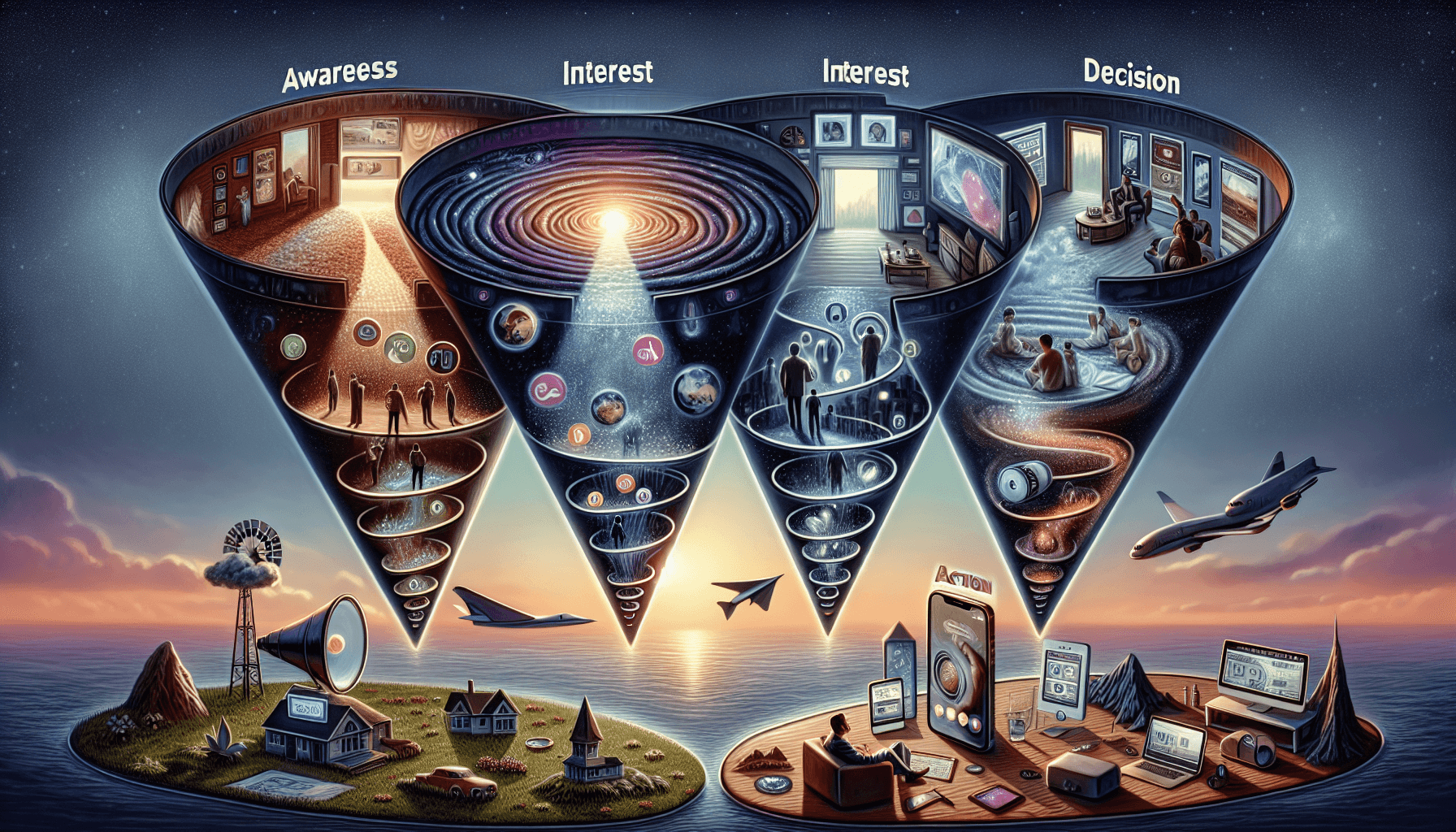
Introduction
In today’s fast-paced digital age, the approach to marketing has evolved significantly, especially for professions closely tied to aesthetics and user experiences, such as interior design and real estate. One of the critical tools in this modern marketing toolkit is the marketing funnel, a method that breaks down the steps of a customer’s journey from awareness to the final action, guiding potential clients seamlessly through this process. Simultaneously, the proliferation of mobile devices has revolutionized how we connect with audiences, making mobile marketing not just an optional strategy but a critical part of the marketing mix. Understanding these concepts is vital for those in the interior design and real estate sectors looking to stand out in a crowded market and engage effectively with tech-savvy audiences.
Understanding Marketing Funnels
A marketing funnel represents the journey potential clients take from the first interaction with a brand to making a purchase decision. This journey is typically segmented into four stages: Awareness, Interest, Decision, and Action. Each stage involves specific strategic approaches to guide prospects progressively towards making a purchase. For interior designers and real estate agents, these stages require unique considerations given the high value and personal nature of the offerings.
The Awareness Stage
This initial phase is about attracting attention. For interior designers and real estate professionals, generating buzz is crucial. One effective strategy is to harness the power of social media platforms, particularly mobile-centric ones like Instagram and Pinterest, which thrive on visual content. Creating a well-curated feed with high-quality images and videos of designs or properties can captivate potential clients. Moreover, leveraging mobile platforms through targeted ads can dramatically enhance reach, tapping into a broader audience base actively searching for inspirations and solutions on their handheld devices.
The Interest Stage
Once awareness is established, the focus shifts to nurturing this newfound attention into genuine interest. Personalized content and compelling storytelling are key here. Interior designers can highlight the transformation power of their work by showcasing before-and-after snapshots, while real estate agents might focus on detailing not just the properties, but the stories of families finding their homes. Importantly, ensuring that websites and landing pages are mobile-optimized can aid in capturing and maintaining interest, as mobile users are notorious for their short attention spans.
The Decision Stage
At this juncture, potential clients are considering their options. Factors influencing their decisions can be complex, ranging from budget constraints to personal tastes. For interior designers, providing virtual consultations via mobile can make a significant difference, allowing clients to visualize potential designs in real-time. Real estate agents can offer virtual tours, making properties accessible from anywhere. Mobile marketing plays a pivotal role here, offering instant access to property specs or design ideas, helping clear doubts and facilitating quicker decisions.
The Action Stage
The final hurdle is converting interest into action. Whether it's booking a design consultation or signing a deal for a new home, this stage necessitates smooth transitions from decision to action. Mobile-friendly interfaces, including easy-to-use contact forms and clear call-to-action buttons, are crucial to minimize friction. Case studies of successful conversions in this sector reveal that streamlined processes, often mediated via mobile platforms, can dramatically enhance conversion rates.
The Role of Mobile Marketing in Each Stage of the Funnel
Statistics show that mobile usage has surpassed that of desktops, making a mobile-first approach imperative. For both interior designers and real estate professionals, neglecting mobile optimization means potentially alienating a significant portion of their target market. Providing mobile-specific content, like sneak peeks or updates via push notifications, can keep the audience engaged at every funnel stage. Furthermore, integrating tools like chatbots on mobile platforms can offer immediate, 24/7 responses to client queries, elevating the overall customer experience.
Crafting Mobile-Optimized Content for Your Audience
The difference between capturing interest and losing it often comes down to how content is presented on mobile devices. Visually appealing graphics, responsive design, and varied content types like short-form videos and infographics are highly effective. Local SEO strategies are also instrumental, ensuring that the searches done by potential clients in a specific locality lead them to relevant services. By optimizing content for mobile search, interior designers and real estate agents can increase their visibility among nearby clients actively seeking their expertise.
Measuring Success of Marketing Funnels and Mobile Marketing Efforts
Understanding the success of these strategies relies on tracking appropriate key performance indicators (KPIs) such as conversion rates, engagement levels, and customer retention. Tools like Google Analytics and mobile-specific platforms such as App Annie provide insights into user behavior, allowing for data-driven adjustments. Regularly analyzing these metrics is paramount to refining marketing strategies, ensuring they remain aligned with evolving client expectations and technological advancements.
Conclusion
In conclusion, mastering marketing funnels and mobile marketing is not just advantageous but necessary for interior designers and real estate professionals aiming to thrive in a competitive landscape. By embracing these strategies, they can significantly enhance client engagement and improve conversion rates. Ultimately, staying ahead in today’s market demands an innovative approach, one that leverages modern digital marketing techniques to meet clients where they are—on their mobile devices. By doing so, professionals in these creative and dynamic industries will not only meet but exceed client expectations, cementing their status as leaders in their fields.